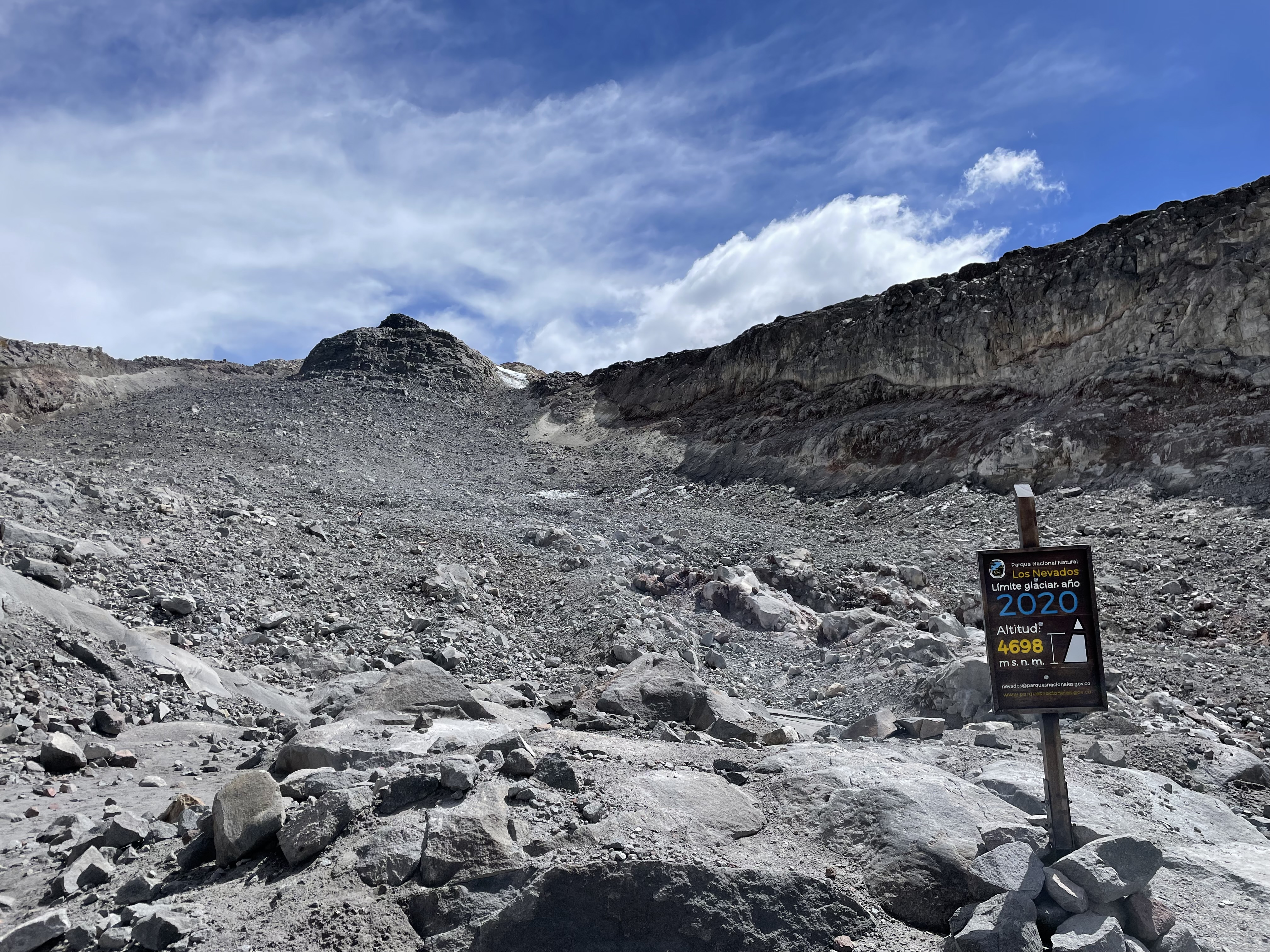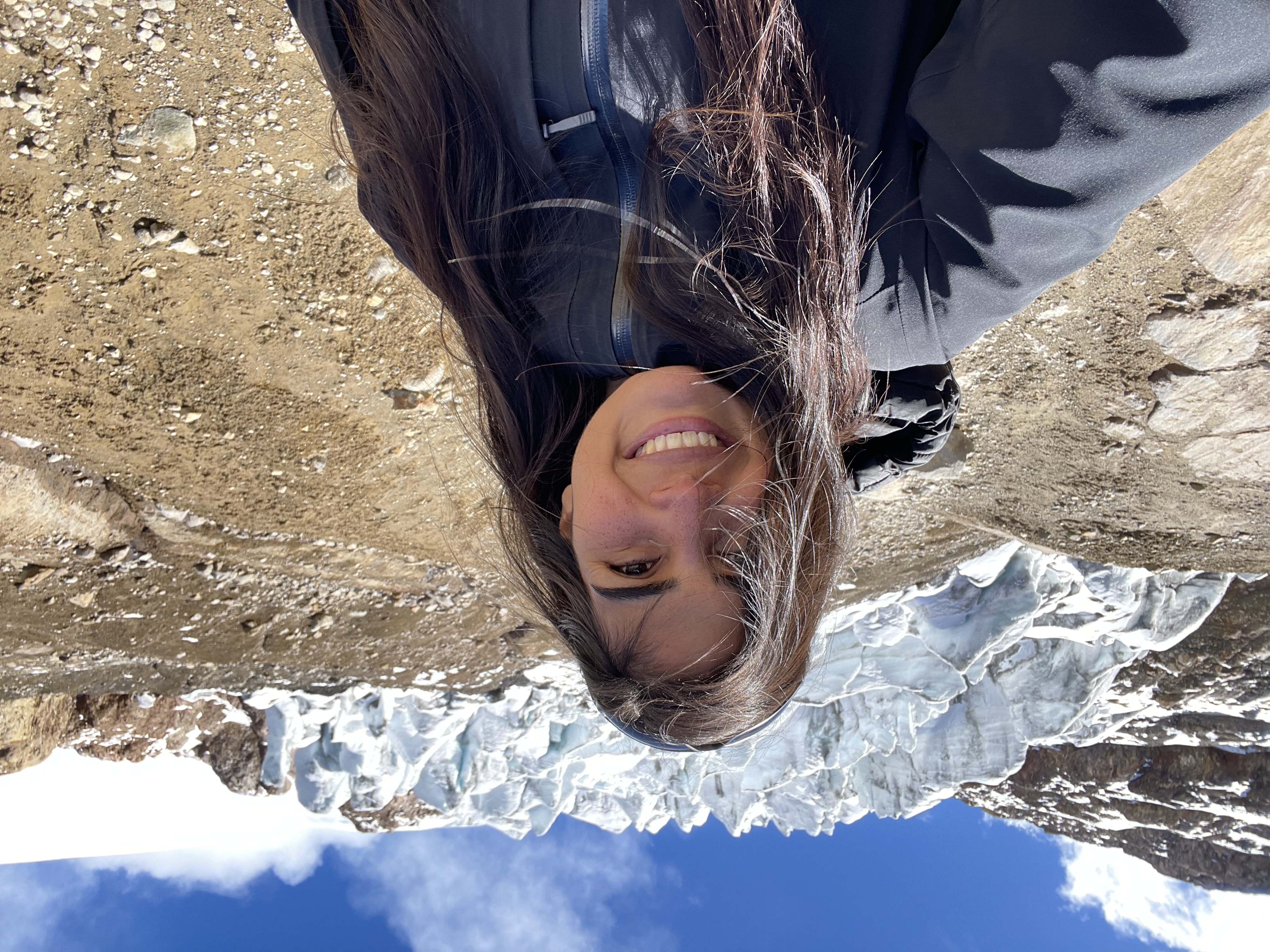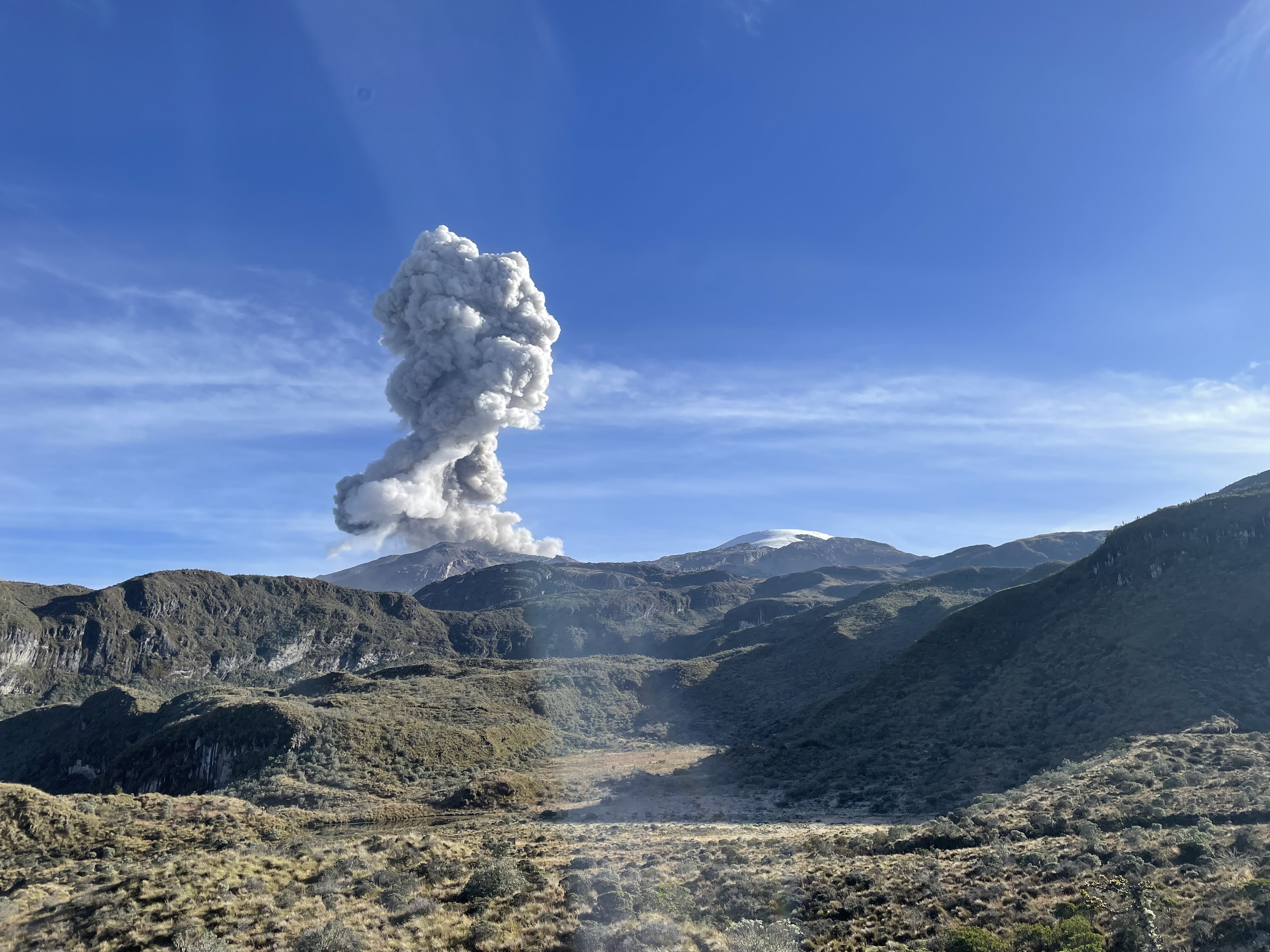
Cardenas stands in front of a receding glacier on the extinct Cayambe volcano in Ecuador.
According to Mariana Cardenas, the last glacier in her home country of Venezuela is “hardly even a glacier anymore.” The thin sheet of ice on the face of Pico Humboldt (Humboldt’s Peak) is mere years from vanishing completely.
“The first time I got to the Humboldt’s Peak glacier, I sat on a rock and cried,” says Cardenas, a passionate lichenologist and graduate student in the Ecology, Evolution and Behavior graduate program who spent her early career years studying lichens in the post-glacial environments of northern South America. “When I kept going, it was with tears in my eyes because I was thinking, ‘The next time I come back, this glacier isn’t going to be here anymore.’”
Conducting fieldwork where glaciers once stood comes with an overwhelming sense of loss. And it’s extremely difficult to work in – climates near the equator and thousands of miles above sea level are harsh and unpredictable. The air is thin. The sun, blinding. Temperatures range from sub-zero to blood-boiling. “I kid you not, one day my rain pants started melting,” says Cardenas of the intense ultraviolet radiation.
But the ethereal beauty of the life emerging on these barren landscapes is enough to motivate Cardenas to return, season after season. She says hiking there “is like walking on the moon,” with volcanic rock stretching out in all directions. Cardenas has a looking glass and under it a strange alien world begins to emerge.

“Lichens and mosses are the kings and queens – the royalty of these environments,” says Cardenas. After bacteria, lichens and moss begin to creep in on the bare rock exposed by glacial melt, using unique strategies to gather nutrients and build up organic debris despite an extremely harsh landscape. “They sort of prepare ecosystems for vascular plants,” says Cardenas. “But although we believe this, because of increasing temperatures in the high mountain environments in the Andes, vascular plants are easily migrating there without any additional help. We’ve actually seen vascular plants colonizing these places only around three years after glacial retreat. It’s happening, it's a reality.”

Every inch of ground is covered with these organisms. Some are more obvious, like the giant mats of red Racomitrium crispipilum moss. Cardenas’ favorite, however, is the fried egg lichen, which can look like a drab colored crust from afar. Up close, tiny cup-like structures hold technicolor yolks of bright pink, rusty brown, orange or green. “What you have there are little packages of cyanobacteria,” says Cardenas. “It tells us a lot about the characteristics of where they live.” Cyanobacteria have an ecological super-power: fixing nitrogen out of thin air. It’s a must when nitrogen-rich soil is nowhere to be found.

“Sometimes we're so blind to see what is surrounding us,” says Cardenas. “When you start seeing in detail, you start appreciating what is around you. That's why I say that when I started working with lichens, my life changed completely.”
She notes that most of the lichens (which are not one singular organism but a combination of at least two working together for mutual benefit) in these environments have cyanobacteria. As lichens, mosses and bacteria cultivate a more nutrient-rich landscape, vascular plants may not be far behind. It’s a complex process to study – and the remote, unpredictable environments of the Andes make research even more difficult, which is exactly why Cardenas sought out the extensive long-term experiments of Cedar Creek Ecosystem Science Reserve for her graduate research.
“How should I say this… those experiments are like the scientific American dream,” says Cardenas. The well maintained experimental site offers something the mountains don’t: a level of scientific control. At Cedar Creek, Cardenas has access to hundreds of managed plots and decades of long-term data. She can ask bigger, broader questions and refine her answers. However, moving to Minnesota, where it snows seasonally, is for her a cause of reflection on the role of snow – permanent or otherwise – in her life.
“Think about a person who grew up in the tropics, who has never seen snow. For us, that’s just something that doesn’t exist. But people from the tropics go to glaciers and mountain peaks to see snow,” says Cardenas, who says there are tourist trails built next to melting glaciers to show people the active effects of climate change. The ancient glaciers of South America also represent something deeper to local communities – a source of life, of access to freshwater. Coming to Minnesota, where it snows year after year, was a shift.
“When I applied to the University of Minnesota, I made the most important ‘click’ of my life, which was going to absolutely change my life,” says Cardenas, “because I decided to leave the eternal snows of the tropics for the ephemeral snows of Minnesota.” – Adara Taylor




All photo credit goes to Mariana Cardenas.